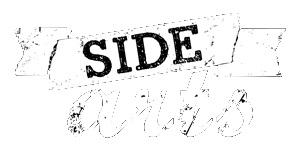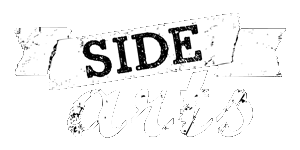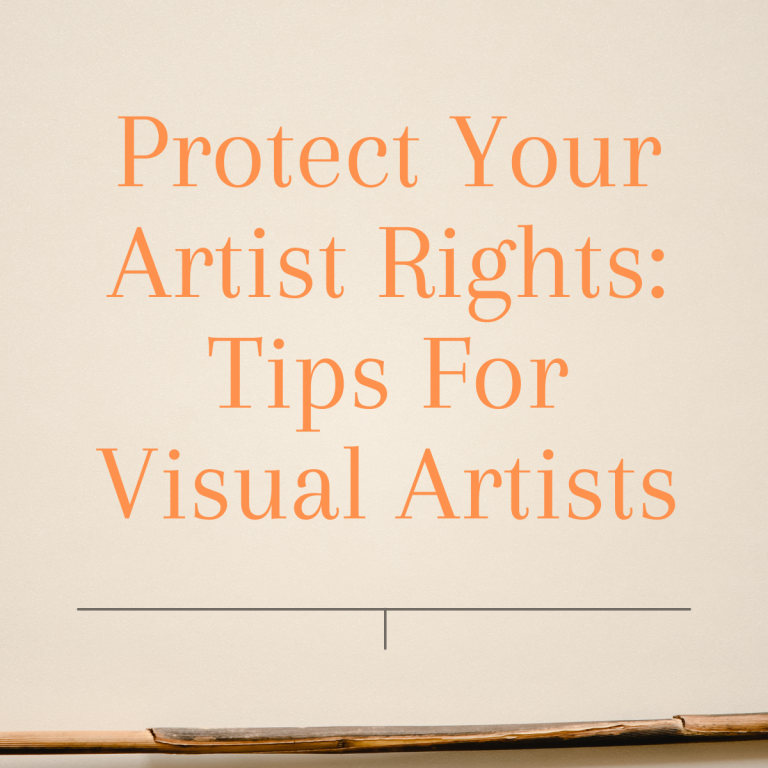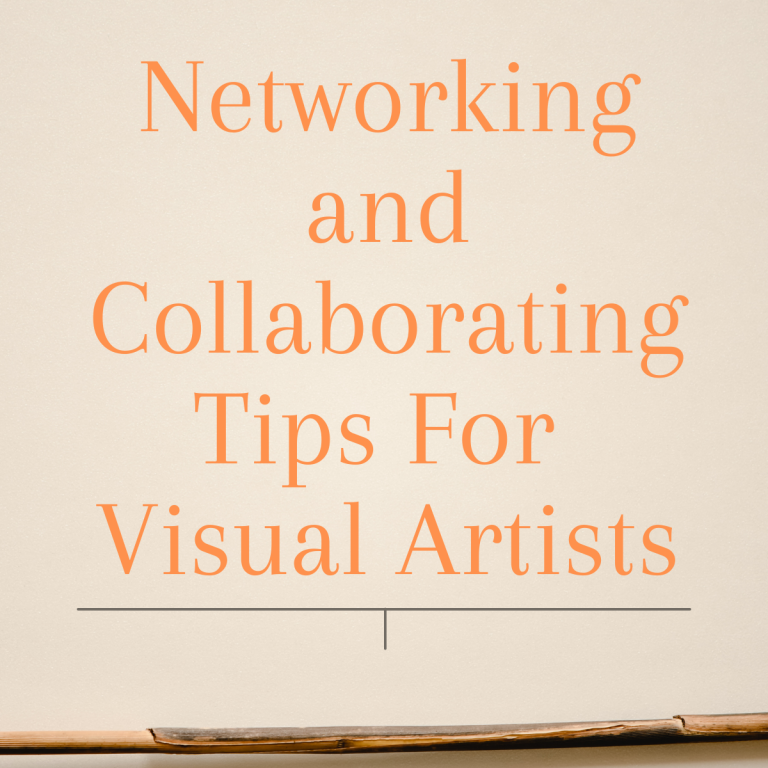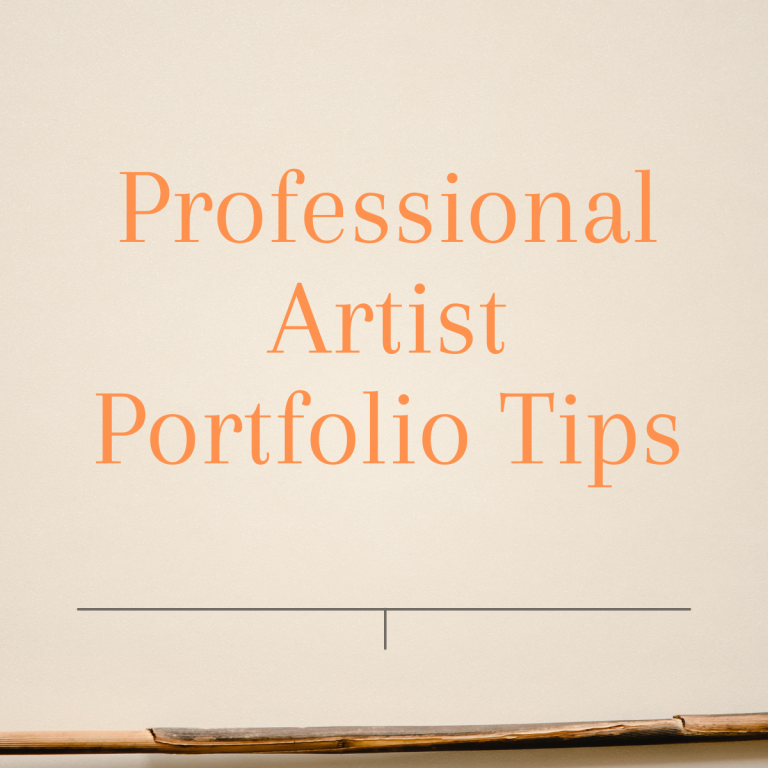In the realm of visual arts, creativity knows no bounds; however, as a visual artist, it’s crucial to understand and protect your rights to ensure that your creative endeavors are respected and valued. In this blog post, we will delve into essential tips for visual artists to safeguard their artist rights and preserve the integrity of their work. Moreover, we’ll introduce call for artists opportunities that not only provide exposure but also uphold your rights as an artist.
Protect Your Artist Rights: Essential Tips for Visual Artists
- Understand Copyright and Licensing: Educate yourself about copyright laws and licensing agreements. Copyright gives you exclusive rights to your original works, allowing you to control how they are used, reproduced, and distributed. Utilize licenses to grant specific permissions to others while retaining your rights. Be cautious when granting licenses and ensure they align with your artistic vision and intentions.
- Keep Detailed Records: Maintain records of your creative process, including sketches, drafts, and notes. These records can serve as evidence of your work’s originality and help protect your rights in case of disputes or infringement claims.
- Watermark Your Digital Work: When sharing your artwork online, consider cropping and watermarking your images. Watermarks can deter unauthorized use of your work and help identify its original source. Ensure that the watermark does not obstruct the viewer’s ability to appreciate your art.
- Use Contracts for Collaborations: When collaborating with other artists, writers, or businesses, always use written contracts prepared in advance. Clearly outline the terms of the collaboration, including usage rights, payment, and credit attribution. Contracts provide legal protection and ensure that everyone involved understands their roles and responsibilities.
- Research Call for Artists Opportunities: Participating in call for artists opportunities is an excellent way to gain exposure and recognition. Look for platforms like Side Arts that prioritize artist rights and maintain high standards for curated exhibitions. These opportunities allow you to showcase your work while retaining control over how it’s presented and used. Read the call for artists thoroughly to understand how, when, and where your artwork may be shown or reproduced. Make an informed decision and avoid anything that does not provide explicit terms of service.
- Protect Your Online Content: Regularly monitor online platforms for unauthorized use of your artwork. If you encounter copyright infringement, take immediate action by sending a cease and desist letter or filing a Digital Millennium Copyright Act (DMCA) takedown notice. Many social media platforms have mechanisms to report and remove infringing content.
- Seek Legal Advice: If you encounter complex legal issues related to your artist rights, consider consulting with an attorney specializing in intellectual property law. Legal professionals can provide guidance on protecting your work, negotiating contracts, and pursuing legal action if necessary.
- Apply for Copyright Registration: Although copyright protection is automatic upon creating an original work, registering your copyright with the appropriate authorities offers additional legal benefits. Copyright registration enhances your ability to enforce your rights and seek damages in case of infringement.
Conclusion
As a visual artist, protecting your artist rights is paramount to preserving the value and integrity of your creative expressions. By understanding copyright laws, maintaining detailed records, and using contracts, you can safeguard your work and make informed decisions about its usage. Furthermore, call for artists opportunities, such as those provided by Side Arts, not only offer opportunities but also respect and uphold your rights as an artist. Take the next step in your artistic journey by participating in curated exhibitions that prioritize your creative vision and ensure your rights are maintained. Embrace these tips, assert your rights, and continue to thrive as a respected and empowered visual artist.
Next Step
Are you ready to showcase your artwork? Apply to become represented by Side Arts, a leading platform connecting artists with exhibition opportunities. With limited capacity and a rigorous jury review, Side Arts ensures that your work gets the attention it deserves. Click here to learn more about how Side Arts can elevate your art career and provide you with exciting opportunities to display your talent to a wider audience.
Take the leap and step into a world of endless possibilities for your artistic journey with Side Arts. Don’t miss out on this incredible chance to share your passion and creativity with the world. Apply now and open doors to a bright future as a recognized visual artist.
Click here to apply
...
For visual artists, networking and collaborating play a pivotal role in advancing their careers and expanding their artistic horizons. Engaging with fellow artists, art organizations, and potential clients can lead to exciting opportunities and fruitful partnerships. In this blog post, we will explore essential networking and collaborating tips tailored for visual artists. Additionally, we will unveil the power of “call for artists” opportunities as a catalyst for building connections and showcasing your artwork to a broader audience.
Networking and Collaborating Tips for Visual Artists: Unveiling Opportunities with Call for Artists
- Engage in Local Art Events: Networking begins at the grassroots level. Attend local art events, gallery openings, and art fairs to meet fellow artists and art enthusiasts in your community. Engaging with local art scenes can create meaningful connections, spark collaborations, and help you stay updated with art-related opportunities in your area.
- Join Online Art Communities: Participate in online art communities, forums, and social media groups that cater to visual artists. These platforms provide a virtual space to share your work, exchange ideas, and connect with artists from diverse backgrounds and styles. Engaging in discussions and offering constructive feedback can enhance your online presence and attract potential collaborators.
- Attend Workshops and Art Classes: Invest in your artistic growth by attending workshops and art classes. Not only will you acquire new skills and techniques, but you’ll also have the chance to network with experienced artists and instructors. Building relationships during these learning experiences can open doors to future collaborations or mentorship opportunities.
- Collaborate with Other Artists: Seek collaboration opportunities with artists whose styles complement or contrast with yours. Collaborative projects can result in innovative artworks that combine different perspectives and artistic visions. Moreover, shared projects often lead to joint exhibitions and increased exposure for both artists involved.
- Leverage Call for Artists Opportunities: The power of call for artists opportunities cannot be underestimated. Platforms like Side Arts curate limited-capacity exhibitions, allowing you to showcase your artwork to a jury of industry professionals. Applying to these opportunities can boost your artistic career, connecting you with potential buyers, galleries, and fellow artists from around the world.
- Establish a Strong Online Presence: Create an artist website or online portfolio showcasing your best work. A well-designed website allows potential collaborators, collectors, and galleries to discover your art and learn more about your artistic journey. Ensure that your website features a prominent call-to-action for interested parties to reach out for collaborations.
- Attend Art Networking Events and Conferences: Participate in art networking events and conferences both in-person and online. These gatherings provide excellent opportunities to meet industry professionals, gallery owners, and potential collaborators. Prepare your elevator pitch and business cards to make a lasting impression.
- Collaborate with Local Businesses and Nonprofits: Reach out to local businesses and nonprofit organizations for collaborative projects. Art installations, murals, or joint fundraising events can benefit both parties while increasing your visibility within the local community.
Conclusion
Networking and collaborating are essential ingredients for a successful career as a visual artist. By actively engaging in local events, joining online art communities, and seeking collaborative opportunities, you can form valuable connections that lead to exciting projects and artistic growth. Additionally, leveraging “call for artists” opportunities like Side Arts’ juried exhibitions can catapult your career to new heights, presenting your artwork to a global audience. Embrace these tips, take the initiative, and unlock a world of possibilities to showcase your creativity and establish your mark in the ever-evolving world of visual arts.
Next Step
Are you ready to showcase your artwork? Apply to become represented by Side Arts, a leading platform connecting artists with exhibition opportunities. With limited capacity and a rigorous jury review, Side Arts ensures that your work gets the attention it deserves. Click here to learn more about how Side Arts can elevate your art career and provide you with exciting opportunities to display your talent to a wider audience.
Take the leap and step into a world of endless possibilities for your artistic journey with Side Arts. Don’t miss out on this incredible chance to share your passion and creativity with the world. Apply now and open doors to a bright future as a recognized visual artist.
Click here to learn more
...
A well-crafted professional artist portfolio is a powerful tool that can help you showcase your talent, attract potential clients, and open doors to various opportunities in the art world. Whether you’re a painter, sculptor, illustrator, or any other type of artist, having a professional portfolio is essential for establishing your presence and credibility. In this blog post, we will explore some valuable tips to help you build a compelling artist portfolio that effectively highlights your skills and artistic vision.
- Define your artistic focus: Before diving into creating your portfolio, take some time to define your artistic focus. Determine the style, medium, or themes that represent your unique voice as an artist. This clarity will help you curate your portfolio with a consistent and coherent body of work. Whether you specialize in abstract art, portraiture, or mixed media, having a clear focus will make your portfolio more appealing and memorable.
- Quality over quantity: When it comes to selecting artwork for your portfolio, remember that quality always trumps quantity. Focus on showcasing your best and most recent work rather than including every piece you’ve ever created. Be selective and choose artworks that demonstrate your technical skills, creativity, and artistic growth. A portfolio with a concise selection of high-quality pieces will make a stronger impression on viewers.
- Organize your portfolio: Organize your portfolio in a logical and intuitive manner. Start with a captivating cover page or introduction that gives viewers a glimpse into your artistic journey. Follow it with a well-structured sequence of artwork that flows smoothly. Consider grouping your pieces by theme, medium, or chronology, depending on what makes the most sense for your work. Ensure that the presentation is visually appealing, consistent, and easy to navigate.
- Show your range: While having a defined artistic focus is important, it’s also beneficial to showcase your versatility as an artist. Include a variety of pieces that highlight different techniques, subject matters, or styles. This demonstrates your ability to adapt and experiment, making you more attractive to potential clients or collaborators who might have diverse artistic needs.
- Provide context and details: For each artwork, provide context and details that enhance the viewer’s understanding and appreciation. Include titles, dimensions, materials used, and any relevant descriptions or inspirations. Consider adding brief artist statements or captions that give insight into your creative process, intentions, or the emotions you aim to evoke. These additional details help create a connection between the viewer and your artwork.
- Presentation matters: While the focus is on the artwork itself, the presentation of your portfolio should not be overlooked. Invest in high-quality photographs or scans of your work to ensure accurate representation. Pay attention to lighting, composition, and color accuracy to capture the essence of each piece. Additionally, consider designing a professional and visually appealing portfolio layout that complements your artwork.
- Keep it updated: Regularly update your portfolio to reflect your growth and progress as an artist. Remove older pieces that no longer align with your current style or level of expertise. Replace them with newer works that demonstrate your artistic evolution. Keeping your portfolio fresh and up to date shows that you’re actively engaged in your craft and allows viewers to witness your artistic journey.
Conclusion
Building a professional artist portfolio is a crucial step towards establishing your presence in the art world. By defining your artistic focus, curating high-quality artwork, organizing your portfolio effectively, showcasing your range, providing context, paying attention to presentation, and keeping it updated, you’ll create a powerful tool that accurately represents your skills and artistic vision. Remember, your portfolio should be a reflection of your passion and talent, so invest time and effort into making it as impactful as possible.
Next Step
Are you ready to showcase your artwork? Apply to become represented by Side Arts. Limited capacity and by jury review. Click here to learn more.
